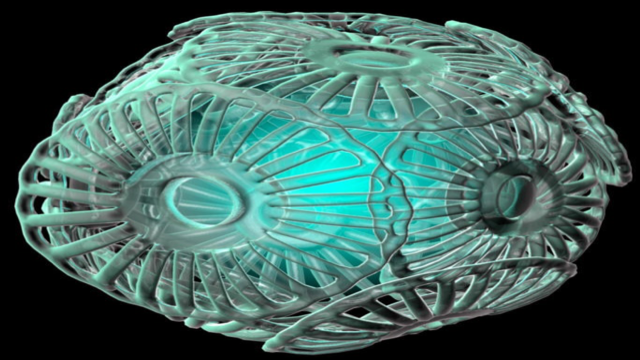Climate change is caused by the fast growing concentration of carbon dioxide (CO2) in the atmosphere.
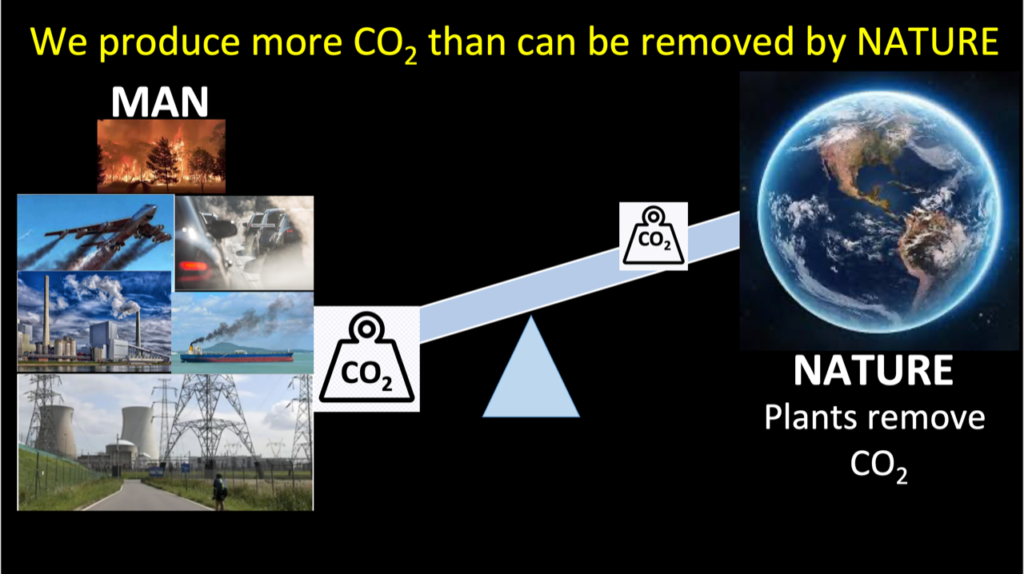
CO2 is a gas and creates a sort of ‘shield’ or ‘filter’ that makes less heat escape from the earth. So, the temperature of the atmosphere rises. The problem is caused by two things. First, by burning fossil fuels.
Just to give you an idea of how much each of the various sectors use:
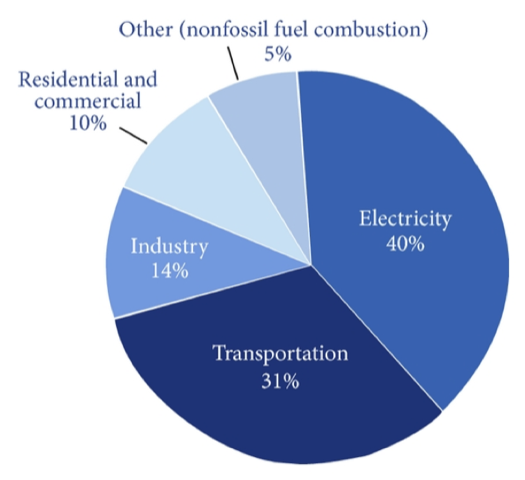
Sources of CO2 emissions by sector worldwide (Researchgate.net)
Second by less absorption of CO2 (the conversion back to carbon and oxygen). What can we do to influence these things?
1. What we can do: Reduce burning fossil fuels.
Fossil fuels contain carbon. When fossil fuels such as coal, oil, or gas are burned, the carbon connects to oxygen from our air and so carbon dioxide or CO2 is created. This comes into our atmosphere.
NASA measures how much CO2 has increased in the last century and shows it in the picture below.
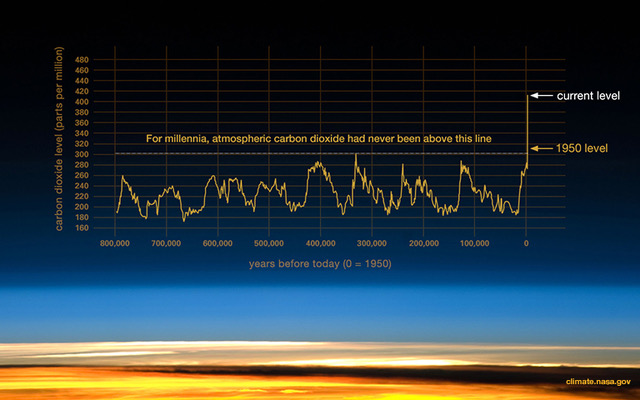
For hundreds of thousand years the CO2 concentration in the atmosphere has been about 200-250 ppm. But since the 1950’s we see the CO2 concentration rapidly growing. It has a strong correlation with the world growth of the industries on earth (picture: Climate.nasa.gov)
What can we do?
We can reduce CO2, by burning lesser fossil fuels. Off course the government should moderate industry and entire sectors, for example by taxing the production of CO2. You can try influencing them. But don’t underestimate what you can do yourself right now. Every action you take can have a positive influence. So, if you want to stop worrying and start taking care, it basically comes down to one thing: Only use what you need (so, not more than you need). See if you can reduce your carbon footprint in a pleasant way, a way that works for you.
On the Ya we show some simple examples that you can easily follow:
- Buy (only) the products that you love and that will last for a long time.
- Heat only the rooms that you use and see if you can reduce by turning it down half an hour or an hour before you go to bed.
- Take shorter or less showers – better for your skin.
- Try vegetarian food: surprisingly good.
- Do your shopping locally so you don’t need to take the car.
- Avoid flying as much as you can.
- Install some water saving taps.
- Use a pressure cooker and a haybox.
- If you need to change your kitchen appliances, choose replacements that use less energy.
- Or very simply: boil the amount of water that you need for your tea or your coffee, not more.
All these things will help you to lessen your carbon footprint and in the meanwhile they will probably also save you money. For sailors we can add: if you can make the wind and the tide work in your advantage this saves you trouble and motoring hours. And it rewards you with more pleasant sailing.
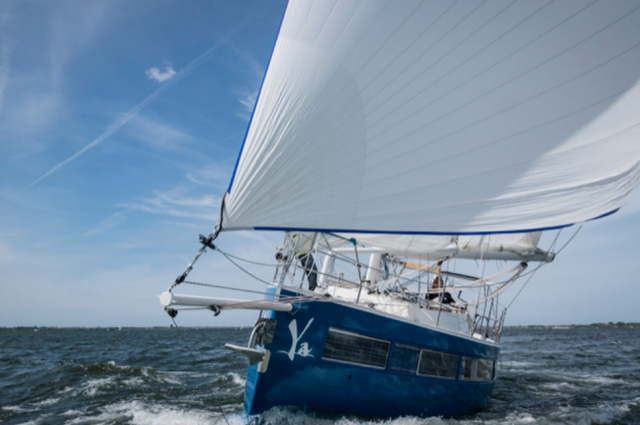
The ‘Ya’ gives various examples of staying fossilfree and live comfortably. Generally: just use what you need. For example: an induction stove saves you 55% of CO2, compared to a gas stove.
2. Increasing the capacity to absorb CO2
We saw what produces CO2 and what we can do to reduce its production. But we can also look at the absorption capacity. Many organisms absorb carbon dioxide and convert it to carbon (for themselves, to grow) and to oxygen, that goes back in the atmosphere. In the sea it is the immense amount of plankton that is doing the main work, on land it is the growing plants.
2a. The plants on land
You might think that our beautiful rainforests absorb most of our CO2. But when they die, they decompose, and will release exactly the same amount of CO2 that they absorbed while growing. Also, we burn parts of the rainforest, which also creates CO2. Over all, the rainforests are not the lungs of the earth. Mind you: the rainforests should be saved exactly for what gives them their name: the rain. They help regulate the temperature and humidity on our planet.
Some plants on land do not release CO2 into the air when they die. The reason: because they stay under water. These plants grow in marsh lands, peat bogs, wetlands and mangrove swamps. The peat bogs of Scotland are therefore more important than the Amazon rain forest in terms of capturing CO2 and producing oxygen. But they only represent a small percentage of the planet. However, it’s good to be aware of this and, if you have the opportunity, help protect these environments.

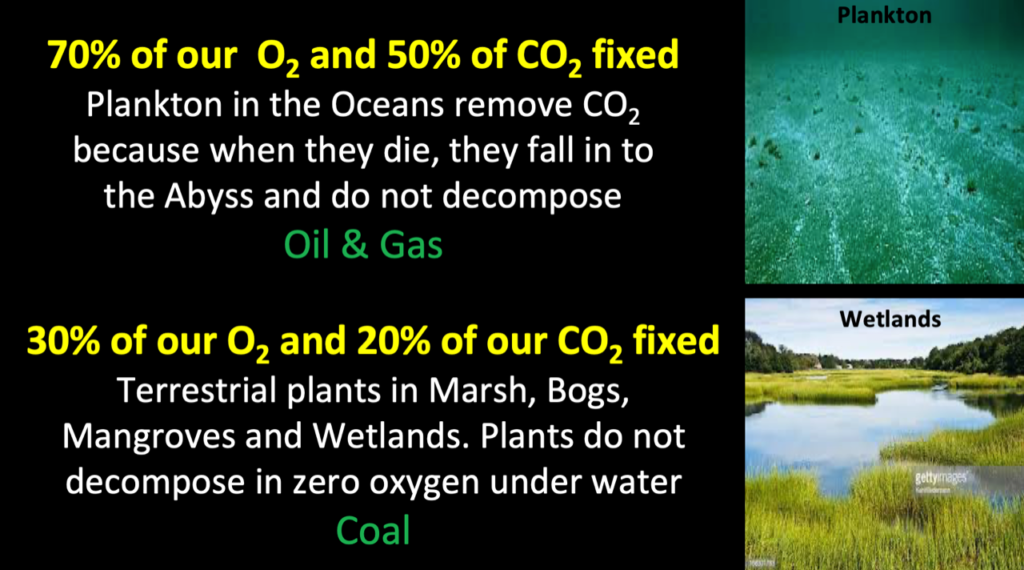
Plankton is our main absorber of CO2; the terrestrial plants in wetlands also contribute.
2b the plankton in the oceans is critically important
Our oxygen production and CO2 fixation mostly take place in the oceans. The water plants and organisms like plankton ‘eat’ the carbon of the CO2 and let the O2 (oxygen) go into the atmosphere. When they die, they fall down and sink incredibly deep, and so a high percentage of the carbon is locked and can’t be used to create CO2. This is why our oceanic plankton is critically important. Think about it, plankton delivers most of the air we breathe. And this plankton is decreasing rapidly since the ‘50s. This takes away your breath doesn’t it? We’ll tell you more about the causes of this decrease and what you can do about it in our next blogs.
This article is the second in a series of four “Ya hears a warning from the ocean”.
For further reading: www.fossilfreearoundtheworld.org and www.GOESFOUNDATION.com

